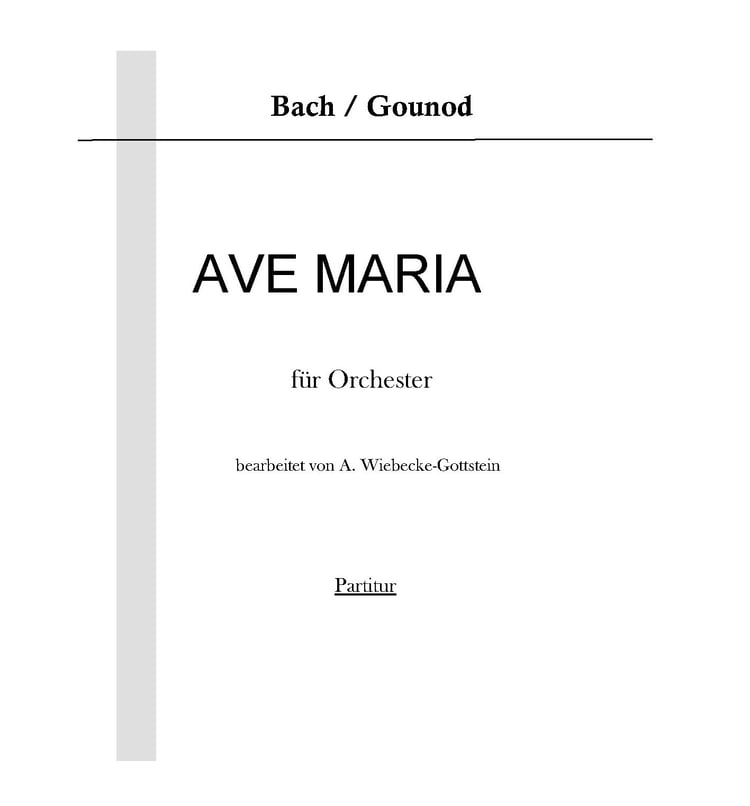- All Products
- diverse Besetzungen / various instrumentations
- Jazz
- Orchester / orchestra
- Streichquintett / string quartett
- Kontrabass Konzerte / double bass concertos
- Kontrabass + Harfe / double bass + harp
- Kontrabass + Gitarre / double bass + guitar
- Klarinette + Kontrabass / clarinet + double bass
- Kontrabass + Klavier / double bass + piano
- Violine + Kontrabass / violin + double bass
- Cello + Kontrabass / cello + double bass
- 6 + mehr Kontrabässe / 6 + more double basses
- 5 Kontrabässe / 5 double basses
- 4 Kontrabässe / 4 double basses
- 3 Kontrabässe / 3 double basses
- 2 Kontrabässe / 2 double basses
- 1 Kontrabss / 1 double bass
Das Notenmaterial der folgenden Werke ist leihweise erhältlich:
John Dowland: „9 Sätze aus <Lachrimae>“
Dies ist die Streichorchester-Version des bekannten Renaissance-Werkes, bei der der Kontrabass die übliche Funktion des 16-Fuß-Instrumentes erfüllt. Seine Stimme ist daher desgleichen als 2. Cello bezeichnet. Bitte bei der Bestellung die Besetzungsgröße angeben.
This is the string orchestra version of the well-known Renaissance work, in which the double bass fulfils the usual function of the 16-foot instrument. Its part is therefore also labelled 2nd cello. Please state the instrumentation size when ordering.
Best. Nr. O 101 nur leihweise
A. Wiebecke-Gottstein: „-LUDIA“
Der Titel dieses etwa 13-minütigen Werkes leitet sich ab aus der Mehrzahlbildung der Endungen der Titel von 3 der 4 Sätze: Praeludium, Interludium und Postludium. Es sind im Grunde motivisch-thematische Kompositionen im barocken Geiste, allerdings mit einer erweiterten Harmonik, die gleichwohl immer noch deutlich Grundton- und quintenbezogen bleibt. Laut und kraftvoll stellt sich das Praeludium vor, verspielt folgt dagegen das im Grunde zweistimmige Interludium. Zentraler Satz ist ein instrumentaler Choral. Mit dem Postludium klingt das Werk ironisch-humoresk aus.
Besetzung: Flöte, Oboe, Klarinette in b, Fagott (gegebenenfalls doppelt zu besetzen, daher werden zwei Exemplare geliefert); 2 Hörner, 2 Trompeten in b, 2 Posaunen, Tuba, Pauke und Schlagzeug (jeweils ein Spieler), Violinen 1 und 2, Bratschen, Celli und Bässe (empfohlene Höchstbesetzung: 10/10/8/6/3).
The title of this approximately 13-minute work is derived from the pluralisation of the endings of the titles of 3 of the 4 movements: Praeludium, Interludium and Postludium. They are basically motivic-thematic compositions in the Baroque spirit, albeit with an extended harmony that nevertheless remains clearly centred on fundamental tones and fifths. The Praeludium is loud and powerful, while the basically two-part Interludium is playful. The central movement is an instrumental chorale. The postlude brings the work to an ironic and humorous close.
Instrumentation: flute, oboe, clarinet in b flat, bassoon (possibly double instrumentation, therefore two copies are supplied); 2 horns, 2 trumpets in b flat, 2 trombones, tuba, timpani and percussion (one player each), violins 1 and 2, violas, cellos and basses (recommended maximum instrumentation: 10/10/8/6/3).
Best. Nr. O 103 nur leihweise
A. Wiebecke-Gottstein: „Abeca“ für Orchester
Das etwa 4 Minuten kurze Stück entstand im Februar 2011 in Schweden. Der Titel bezieht sich auf seine dreiteilige Form, deren erster Teil am Ende wiederholt wird (ABCA). Abschnitt A ist ein lebhafter Tanz, basierend auf einem 3+3+2 Achtel-Rhythmus. Teil B ist ein lyrischer, fast romantischer Walzer und Abschnitt C ist eine langsam beginnende Mazurka, die wieder zum ersten Teil zurückführt. Das musikalische Material ist absolut harmonisch und tonal, selbst wenn die Harmonik nicht funktional verwendet wird. Die Orchesterbesetzung besteht aus Flöte 1+2, Oboe 1+2, Klarinette in B 1+2, Fagott 1+2, 4 Hörner in F, 2 Trompeten in B, 2 Posaunen, 3 (evtl. 4) Schlagzeuger (keine Pauke), Streicher.
Von dem Stück gibt es eine kammermusikalische Version für Klarinette, Posaune, Gitarre, Kontrabass und Schlagzeug (s. u. diverse Besetzungen).
The piece, which is about 4 minutes long, was written in Sweden in February 2011. The title refers to its three-part form, the first part of which is repeated at the end (ABCA). Section A is a lively dance based on a 3+3+2 quaver rhythm. Section B is a lyrical, almost romantic waltz and section C is a mazurka that begins slowly and leads back to the first section. The musical material is absolutely harmonious and tonal, even if the harmony is not used functionally. The orchestration consists of flute 1+2, oboe 1+2, clarinet in Bb 1+2, bassoon 1+2, 4 horns in F, 2 trumpets in Bb, 2 trombones, 3 (possibly 4) percussionists (no timpani), strings.
There is a chamber music version of the piece for clarinet, trombone, guitar, double bass and percussion (see various instrumentations below).
Best. Nr. O 105 nur leihweise


